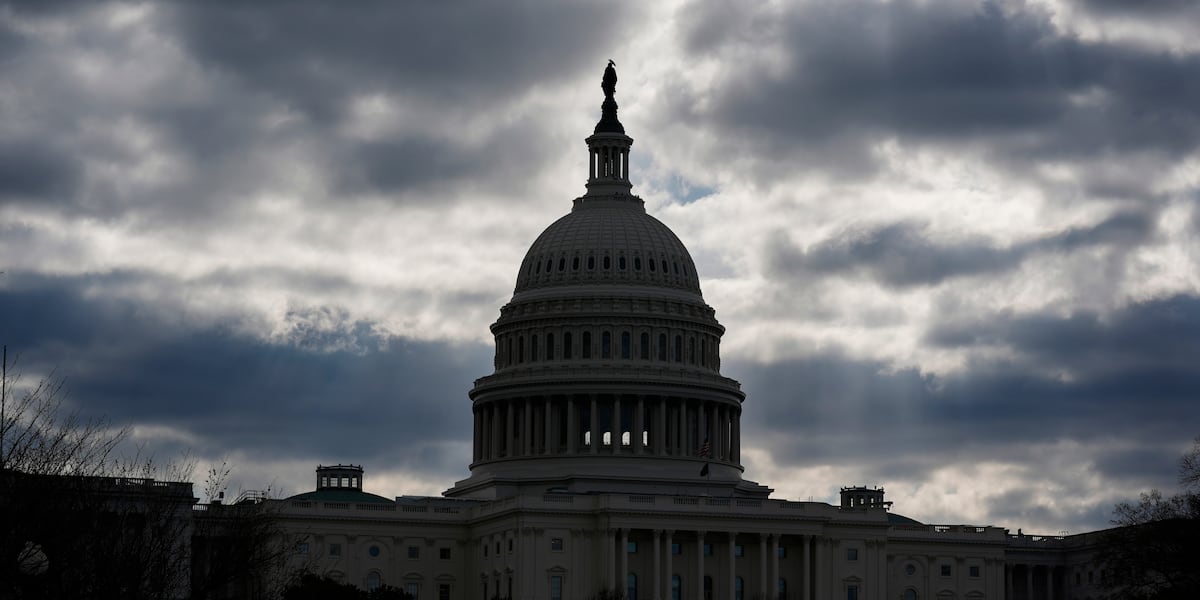[1/4] U.S. President Joe Biden arrives to hold a press conference at the conclusion of the G7 Summit, in Hiroshima, Japan, May 21, 2023. REUTERS/Jonathan Ernst
News
Biden and McCarthy to meet on Monday as debt ceiling talks resume
/cloudfront-us-east-2.images.arcpublishing.com/reuters/LV6GFINO5RJGLJTZ6GMDOD5M4U.jpg)
HIROSHIMA, Japan, May 21 (Reuters) – U.S. President Joe Biden and House Republican Speaker Kevin McCarthy will meet to discuss the debt ceiling on Monday, after the two leaders held a phone call on Sunday as the president flew back to Washington that both sides described as positive.
McCarthy, speaking to reporters at the U.S. Capitol following the call, said there were positive discussions on solving the crisis and that staff-level talks were set to resume later on Sunday.
Asked if he was more hopeful after talking to the president, McCarthy said: “Our teams are talking today and we’re setting (sic) to have a meeting tomorrow. That’s better than it was earlier. So, yes.”
A White House official confirmed Monday’s meeting but offered no specific time.
Biden, who arrived back at the White House late on Sunday evening after his trip to Japan, said the call with McCarthy had gone well. “It went well,” Biden said. “We’ll talk tomorrow.”
Staff members from both sides reconvened at McCarthy’s office in the Capitol on Sunday evening for talks that lasted about two-and-a-half hours.
Senior White House advisor Steve Ricchetti told reporters as he left the meeting, “We’ll keep working tonight.”
Biden, before leaving Japan following the G7 summit earlier on Sunday, said he would be willing to cut spending together with tax adjustments to reach a deal but the latest offer from Republicans was “unacceptable.”
Less than two weeks remain until June 1, when the Treasury Department has warned that the federal government could be unable to pay all its debts, a deadline U.S. Treasury Secretary Janet Yellen reaffirmed on Sunday. A failure to lift the debt ceiling would trigger a default that would cause chaos in financial markets and spike interest rates.
McCarthy’s comments on Sunday appeared more positive than the increasingly heated rhetoric in recent days, as both sides reverted to calling the other’s position extremist and talks stalled.
“Much of what they’ve already proposed is simply, quite frankly, unacceptable,” Biden told a news conference in Hiroshima. “It’s time for Republicans to accept that there is no bipartisan deal to be made solely, solely on their partisan terms. They have to move as well.”
The president later tweeted that he would not agree to a deal that protected “Big Oil” subsidies and “wealthy tax cheats” while putting healthcare and food assistance at risk for millions of Americans.
He also suggested some Republican lawmakers were willing to see the U.S. default on its debt so that the disastrous results would prevent Biden, a Democrat, from winning re-election in 2024.
After Sunday’s call, McCarthy said while there was still no final deal, there was an understanding to get negotiators on both sides back together before the two leaders met: “There’s no agreement. We’re still apart.”
“What I’m looking at are where our differences are and how could we solve those, and I felt that part was productive,” he told reporters.
Meanwhile, concerns about default are weighing on markets as an increase in the government’s self-imposed borrowing limit is needed regularly to cover costs of spending and tax cuts previously approved by lawmakers.
On Friday, the United States was forced to pay record-high interest rates in a recent debt offer.
SPENDING CUTS
McCarthy said Republicans backed an increase in the defense budget while cutting overall spending, and that debt ceiling talks have not included discussions about tax cuts passed under former President Donald Trump.
A source familiar with the negotiations said the Biden administration had proposed keeping non-defense discretionary spending flat for the next year.
Biden ahead of the call stressed that he was open to making spending cuts and said he was not concerned they would lead to a recession, but he could not agree to Republicans’ current demands.
The Republican-led House last month passed legislation that would cut a wide swath of government spending by 8% next year. Democrats say that would force average cuts of at least 22% on programs like education and law enforcement, a figure top Republicans have not disputed.
Republicans hold a slim majority in the House and Biden’s fellow Democrats have narrow control of the Senate, so no deal can pass without bipartisan support. But time is running short as Monday’s meeting will take place with just 10 days left to hammer out a deal before hitting Treasury’s deadline.
McCarthy has said he will give House lawmakers 72 hours to review an agreement before bringing it up for a vote.
The last time the nation has come this close to default was in 2011, also with a Democratic president and Senate with a Republican-led House.
Congress eventually averted default, but the economy endured heavy shocks, including the first-ever downgrade of the United States’ top-tier credit rating and a major stock sell-off.
Reporting by Trevor Hunnicutt; Editing by Simon Cameron-Moore
Our Standards: The Thomson Reuters Trust Principles.

News
Live news: SingPost shares slump after CEO fired over handling of whistleblower report

While the holiday spirit will dominate the news agenda, there are notable developments to watch across the world, as the three defining themes of 2024 — elections, war and inflation — continue to hum in the background.
On Tuesday, Moldova’s pro-EU president-elect Maia Sandu will attend her inauguration. Her narrow election victory in October, despite alleged Russian meddling in the process, will set the former Soviet country on a path to EU membership.
Georgia, on the other hand, will on Sunday swear in Mikheil Kavelashvili to the presidency, a pro-Russian firebrand and Croatia will hold a first-round presidential vote on Sunday.
On Monday, Mozambique’s top court is set to give a verdict on the country’s disputed election in October, while Albanian opposition parties block roads demanding Prime Minister Edi Rama’s resignation
Bank of Japan governor Kazuo Ueda will deliver a speech on Christmas Day. Economists will pore over his words for clues on how president-elect Donald Trump’s tariffs will affect the pace and trajectory of monetary policy.
UK third-quarter GDP figures will be out on Monday, after months of disappointing economic releases for chancellor Rachel Reeves.
Read more in The Week Ahead
News
Who is Sebastian Zapeta? Guatemala migrant set a woman on fire on New York City subway

A Guatemala migrant has been arrested for allegedly setting a woman on fire and burned to death on a subway train in Brooklyn, New York, early Sunday morning. The incident occurred at the Stillwell Avenue Subway station in Coney Island around 7:30 a.m.
The suspect, identified as 33-year-old Sebastin Zapeta, is believed to have entered the US from Guatemala approximately a year ago. It remains unclear whether he entered the country legally or illegally.
During a press conference Sunday evening, New York Police Department (NYPD) officials, including Police Commissioner Jessica Tisch, explained, “As the train pulled into the station, the suspect calmly walked up to the victim. The female victim was in a seated position.”
ALSO READ| German Christmas market attack suspect enjoyed beer and ate shrimp hours before killing spree: ‘He was always on…’
“The suspect used what we believe to be a lighter to ignite the victim’s clothing, which became fully engulfed in a matter of seconds.”
Officers on patrol at the station were alerted to the situation by the smell and sight of smoke. While responding at the scene, they discovered a person inside the train car fully engulfed in flames. The fire was extinguished with assistance from an MTA employee using a fire extinguisher. The victim was pronounced dead at the scene.
Elon Musk and Mayor Eric Adams condemns subway attack
Zapeta remained at the scene after the incident. He was found seated on a bench outside the train car. Body-worn cameras worn by responding officers captured clear footage of the suspect. Tisch noted, “Body-worn cameras on the responding officers produced a clear and detailed look at the killer.”
Following the release of the suspect’s description and photographs to the public, three high school students recognized the man and called 911. Transit officers confirmed the description and located the suspect on a moving train. The train was stopped at the next station, where officers boarded, identified the man, and arrested him without further incident.
ALSO READ| Can Elon Musk become US president? Donald Trump big remarks amid raging debate
New York City Mayor Eric Adams expressed his condolences to the victim’s family, calling the attack a “senseless killing.”
“Grateful to the young New Yorkers and transit officers who stepped up to help our NYPD make a quick arrest following this morning’s heinous and deadly subway attack. This type of depraved behaviour has no place in our subways, and we are committed to working hard to ensure there is swift justice for all victims of violent crime.”
Tesla boss Elon Musk also took to X (formerly Twitter) to express his frustration. “Enough is enough,” he posted, along with the Guatemala migrant’s subway CCTV shot.
News
Trump names Treasury adviser from first term to chair economic panel

Unlock the White House Watch newsletter for free
Your guide to what the 2024 US election means for Washington and the world
Donald Trump has tapped Stephen Miran, an economist who served during his first term, to chair his Council of Economic Advisers.
With the nomination, the president-elect is seeking to elevate to a White House economic post not only a critic of Federal Reserve chair Jay Powell but one who has accused the Biden administration of manipulating the economy and “usurping” the central bank’s role.
“Steve will work with the rest of my Economic Team to deliver a Great Economic Boom that lifts up all Americans,” Trump said in a statement on Sunday.
Miran was a senior adviser for economic policy at the Treasury department in the first Trump administration.
Currently a senior strategist at hedge fund Hudson Bay Capital Management, he said he was honoured. “I look forward to working to help implement the President’s policy agenda to create a booming, noninflationary economy that brings prosperity to all Americans!” he posted on X.
The White House Council of Economic Advisers is a three-person group that advises the president on economic policy.
Trump has threatened US trading partners, vowing to impose sweeping tariffs, including 25 per cent levies on goods from Mexico and Canada and 10 per cent on China’s imports, on his first day in office.
On the campaign trail, Trump vowed to impose blanket levies of 20 per cent on all US imports, as well as tariffs of 60 per cent on those from China, suggesting his second-term policies could be more protectionist and disruptive to the global economy and markets than his first.
The president-elect has also pledged to renew tax cuts he enacted during his first spell in the White House.
Earlier this year, Miran co-wrote a paper accusing Biden’s Treasury department of manipulating the economy during the election, arguing the government’s dependence on short-term debt amounted to “stealth quantitative easing and impedes the Fed’s ability to fight inflation.
“By adjusting the maturity profile of its debt issuance, Treasury is dynamically managing financial conditions and, through them, the economy, usurping core functions of the Federal Reserve”, he wrote with economist Nouriel Roubini.
“We dub this novel tool ‘activist Treasury issuance,’ or ATI. By manipulating the amount of interest-rate risk owned by investors, ATI works through the same channels as the Fed’s quantitative easing programs.”
In FT Alphaville last year, Miran co-authored a piece warning against the perils of a two-tier bond market, which “would impair Treasuries’ ability to serve as risk-free collateral underpinning the global financial system” and bring to the US the chaos of a defaulting emerging economy.
Miran has also hit out at Powell for urging more aggressive fiscal and monetary stimulus in October 2020, about a month before that year’s election, to aid the economic recovery amid the Covid-19 pandemic.
“Powell was wrong politically and economically when he urged Congress to ‘go big’ on fiscal stimulus in October of 2020, on the eve of a Presidential election, suggesting that voters favour Democrats’ $3 trillion proposals over Republicans’ $500 billion”, Miran wrote on X in September. “We know what happened next.”
Miran must be confirmed by the US Senate.
Last month, Trump named Kevin Hassett as chair of the National Economic Council.
-

 Politics1 week ago
Politics1 week agoCanadian premier threatens to cut off energy imports to US if Trump imposes tariff on country
-
/cdn.vox-cdn.com/uploads/chorus_asset/file/25789444/1258459915.jpg)
/cdn.vox-cdn.com/uploads/chorus_asset/file/25789444/1258459915.jpg) Technology1 week ago
Technology1 week agoOpenAI cofounder Ilya Sutskever says the way AI is built is about to change
-

 Politics1 week ago
Politics1 week agoU.S. Supreme Court will decide if oil industry may sue to block California's zero-emissions goal
-
/cdn.vox-cdn.com/uploads/chorus_asset/file/25546252/STK169_Mark_Zuckerburg_CVIRGINIA_D.jpg)
/cdn.vox-cdn.com/uploads/chorus_asset/file/25546252/STK169_Mark_Zuckerburg_CVIRGINIA_D.jpg) Technology1 week ago
Technology1 week agoMeta asks the US government to block OpenAI’s switch to a for-profit
-

 Business1 week ago
Business1 week agoFreddie Freeman's World Series walk-off grand slam baseball sells at auction for $1.56 million
-
/cdn.vox-cdn.com/uploads/chorus_asset/file/23951353/STK043_VRG_Illo_N_Barclay_3_Meta.jpg)
/cdn.vox-cdn.com/uploads/chorus_asset/file/23951353/STK043_VRG_Illo_N_Barclay_3_Meta.jpg) Technology1 week ago
Technology1 week agoMeta’s Instagram boss: who posted something matters more in the AI age
-
News1 week ago
East’s wintry mix could make travel dicey. And yes, that was a tornado in Calif.
-
/cdn.vox-cdn.com/uploads/chorus_asset/file/24924653/236780_Google_AntiTrust_Trial_Custom_Art_CVirginia__0003_1.png)
/cdn.vox-cdn.com/uploads/chorus_asset/file/24924653/236780_Google_AntiTrust_Trial_Custom_Art_CVirginia__0003_1.png) Technology2 days ago
Technology2 days agoGoogle’s counteroffer to the government trying to break it up is unbundling Android apps













